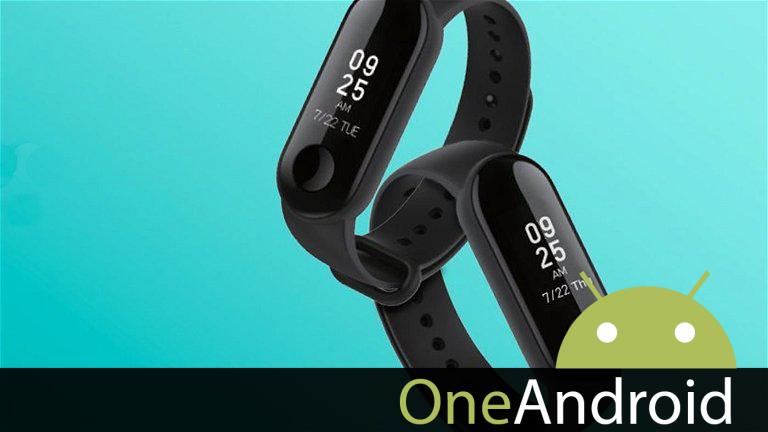A gyroscope, proximity sensor or compass are just some of the 13 sensors included in your bracelet or smartwatch. We tell you what they are and how useful they are.

Your smart bracelet or watch perro tell you how many steps you’ve taken, guide you to a specific location, or measure your heart rate how does it work?
Then in the device a equipo of sensors that are key for its implementation, since they are responsible for these very interesting tools that you use every day smart band or in smart watch.
A full insight into how the device you wear on your wrist works through discovery 13 sensors including smart bracelets and watches.
You may already know some of them, like GPS, but that’s about it others surprise you. Ready to learn more about the sensors in your bracelet or smartwatch? Let’s go there.
13 sensors in your smart bracelet or watch
From the habitual Xiaomi Mi Band to the Amazfit GPS watch, wearables that are labeled “smart” contain a equipo of sensors that enable their operation.
Some of these sensors are the same for all deviceswho others are more exclusive and they’re only found in some wearables. Let’s see what they are.
A blood oxygen meter, or SpO2
Your bracelet or smartwatch may have a blood oxygen meter, called SpO2 and also included in some Samsung phones.
By emitting pulses of light that pass through the skin, this sensor is able to see and analyze the color of blood since this changes with the heartbeat.
This is how your bracelet or smartwatch calculates the oxygen level in your blood it must be between 95% and 100% Make sure the cells in your body are getting all the oxygen they need.
gyroscope
The gyroscope is the sensor for this measures the angular velocity of the device and thus their exact position.
Combining the data from the gyroscope with data from other sensors such as the accelerometer, wristband keeps the correct orientation when you move and being able to distinguish the type of movement you are doing (y también.g. running instead of brisk walking).
altimeter
Take one point as a reference, the altimeter it detects every change in altitude what you are
That way, the smartwatch you’re wearing on your wrist knows if it’s you climb stairs or a mountainand it espectáculos in the calorie count.

The altimeter detects the altitude you are at, for example when driving up a slope.
compass
The map application might not work without the compass, which is also helpful tell you how to get to a precise point don’t get lost along the way.
accelerometer
One of the most important sensors on your wearable is the speedometer, which measures speed G-force, direction of acceleration and the center of gravity and orientation of the device.
As we have already mentioned, together with the information provided by the gyroscope, the bracelet or watch allows it to know what type of movement you are making.
proximity sensor
The proximity sensor detects when There are objects near the device. So when you go to your smartwatch or bracelet, it knows you’re going to use it and you perro turn on the home screen.
However, when you are not using the device, the proximity sensor will do Go to sleep to save battery.
ambient light sensor
The ambient light sensor, which is also present in mobile phones, is responsible for this correspond to the light level of the environment it is in and send it to the device to trigger certain actions.
if so coche brightness onThis sensor measures the external light to compensate for the brightness of the bracelet or watch screen.
heart rate sensor
Most smart bracelets and watches integrate a heart rate sensor to let you know Beats per minute your heart gives.
This information is especially useful if you play sportsas it helps you to know that your heart rate is correct even during high activity.
bioimpedance sensor
The bioimpedance sensor measures your skin’s resistance to a small amount of electricity emitted by the device’s battery electrodes.
By analyzing this electrical resistance, the smart bracelet or watch perro learn data like that water level, respiratory rate or sleep.
GPS
Another of the most well-known sensors on a smart device is GPS, which is accustomed specify exact location of the wearable and track its activity. This GPS is essential to get directions from Maps aplicación to reach a destination.

GPS helps you get your bearings with your smart bracelet or watch.
magnetometers
The magnetometer on your bracelet or smartwatch measures the earth’s magnetic field and helps you find your north. Along with the GPS, it helps you stay informed Where is your location and where are you looking?.
body temperature sensor
The body temperature sensor included in some smart bracelets monitors body temperature throughout the day. It’s a very useful sensor to know if you have a fever or when your menstrual cycle starts.
UV index meter
The last of the sensors on your bracelet or smartwatch that we want to talk about is this it measures the intensity of ultraviolet radiation come from the sun
When you go outside, this sensor detects whether sunlight is dangerous or not and notify you vía the wearable.
If you were interested in the operation of all these sensors, but do not yet own a device with these characteristics, you cánido take a look at our recommendations best smart watches and best smart bracelets.
